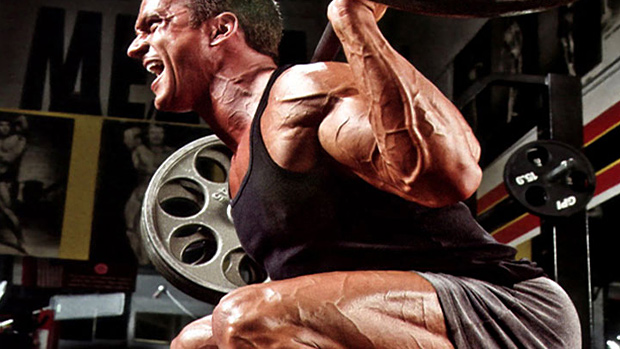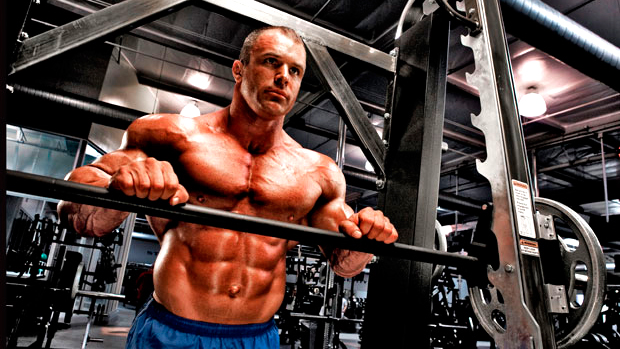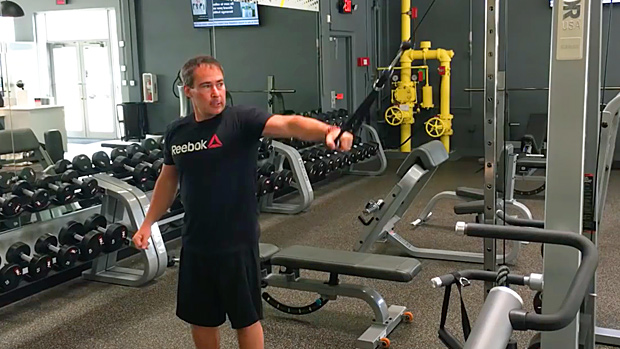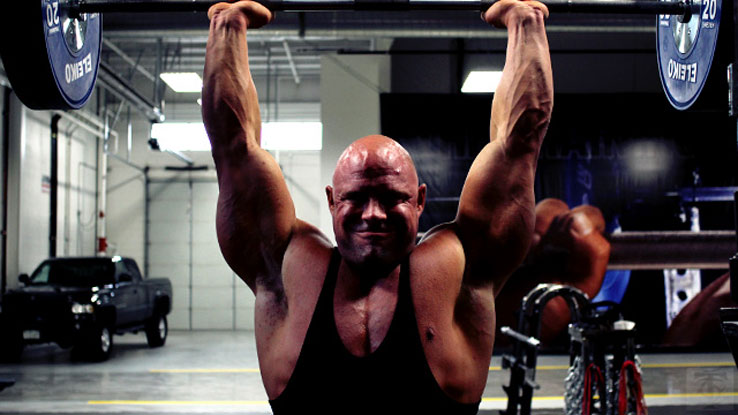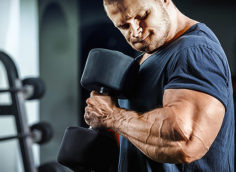What Great Squats Are Made Of
The ability to perform a correct, deep squat is a good indicator of your overall fitness level and movement quality. Is it the end all, be all? No, but it ranks right up there.
Squatting is a complex movement that requires stability of the trunk and mobility of the extremities through constantly changing tension and position.
Doing one correctly shows that you have proper ankle dorsiflexion, hip flexion, thoracic extension, and glute activation. This mobility mitigates common musculosketetal issues: low back pain, anterior knee pain, hip pain, hamstring strains, and groin strains.
Yet some people just aren't ready to squat. Stiff ankles, poor hip mobility, poor core stability, or something more structural, like femoral acetabular impingement can play a role in whether someone can squat to depth.
Addressing the limitations will improve squat technique and depth. We'll tackle those limitations – but first, let's dispel the myth that squatting deeply is bad for the knees.
Squatting deep is not dangerous for your knees. A deep squat requires that the anterior surface of your thigh drop below knee level on the descent.
I'm not saying you have to squat "ass-to-grass." Not everyone can or should squat below parallel without considering their training history, injury history, postural deficiencies, or mobility deficits.
Many lifters assume squatting with a limited ROM is a safer way to squat. Not true.
Research shows there's no discernible difference between three different squat depths (70, 90, and 110 degrees of knee flexion) with regards to patellofemoral joint reaction force and patellofemoral joint stress.
Squatting below parallel is not bad for your knees. Trainers who say so don't know how to teach it properly.
How to Get a Deeper Squat
How you prepare to squat is crucial. Lack of mobility is what keeps people from squatting to depth, and it's the preparation before the workout that'll increase mobility.
Ways to Warm Up for Mobility
Several common musculoskeletal issues tend to pop up repeatedly. Here's how to correct them.
Dorsiflexion means pointing the toes towards the shin. To perform a proper squat, the ankle needs roughly 15 degrees of dorsiflexion. But because we often wear cinder blocks for shoes, many lifters have limited ankle mobility.
Lack of dorsiflexion can lead to a cascade of events when squatting: anterior weight shift, pronation, tibial internal rotation, femoral internal rotation, knee valgus, and heels coming off the ground.
Luckily, there are a handful of simple drills you can do to help improve ankle dorisiflexion that will clean up your squat technique.
Wall Ankle Mobilization (Multi Planar)
Start with your toes 2-3 inches from the wall. Then gently tap your knee to the wall with each repetition. If you feel your heel coming off the ground, move your foot closer to the wall.
Perform five reps pushing the knee inward, five straight ahead, and five with the knee moving outward, for a total of 15 reps per foot.
Knee-Break Ankle Mobilizations
Stand on two 5-10 pound plates with your toes on the plates and heels on the ground. Push your knees over your toes, without pronating or allowing the knees to cave in.
You may find a significant restriction, but it's important not to force the range of motion. Use what ROM you have, and just rock back and forth. Perform 10-15 reps.
A significant factor preventing many lifters from hitting proper depth on a squat is that many have the hip mobility of a crowbar. This can mean any number of things ranging from lack of hip internal rotation, to short or stiff adductors, to short or stiff hip flexors.
One problem called "hip internal rotation deficit" is the inability to internally rotate the hip. And you need a certain amount of hip internal rotation to go into deep hip flexion. Knee-to-knee mobilization helps mitigate this.
Knee-to-Knee Mobilization
Lie on your back, feet flat, and rock your knees back and forth. Shoot for 8-10 reps per side.
For really stiff hips, hold the stretch longer. Instead of mobilizing the knees, just hold the stretch by holding the knees together anywhere from one to two minutes.
Another problem is short or stiff adductors. The adductor complex is a fairly dense area of muscle that's a common trouble spot for lifters.
The adductors play a major role in both hip extension and hip flexion. Outside of some aggressive foam rolling or manual massage therapy in that area, there are a few exercises you can perform that will definitely help.
Split Stance Adductor Mobilizations
Make sure to maintain a neutral spine throughout. It's important to go into both hip flexion and extension on this exercise. Be sure to not allow the lumbar spine to flex as you sit back!
Half Kneeling Adductor Dips
Very similar to the one above, this exercise is another great movement to help open up the hips and target the adductors.
Prone Hips Flexed Hip Rocking
This exercise helps mobilize the hips into both adduction and abduction.
Starting in a quadruped position, flex one hip to 90 degrees. From there, rock side to side and limit movement from the lumbar spine while focusing more on the hip capsule itself. It's important to note that this is a self-limiting exercise. Don't be too concerned with range of motion, just try to improve on it.
Hip flexor tightness is common because of all the sitting we do. There are valuable drills that you can do on a daily basis that hammer the hip flexors. The one I recommend most is the wall hip flexor mobilization.
Wall Hip Flexor Mobilization
This targets the rectus femoris, which crosses both the hip and knee joints. Kneel in front of a wall and rock back and forth.
While poor t-spine extensibility causes lots of issues up and down the kinetic chain, particularly regarding squatting, limited shoulder mobility and/or thoracic extension will hinder your ability to get into proper position.
Basic drills to address this include:
Three-Point Extension-Rotation
While considered a progression from your typical quadruped extension-rotation, this exercise incorporates a bit more anterior core engagement as well as a little more serratus recruitment, which is always important for optimal shoulder function. Do 8-10 reps on each side.
No-Money Drill
This targets both glenohumeral mobility and scapular stability.
Stand flush against the corner of a wall or a power rack with your elbows at your sides, bent to 90 degrees. Abduct your lower arm, making sure to keep your shoulder blades down the entire time. Don't compensate by hyper-extending your lumbar spine. Do 8-10 reps.
Sometimes what prevents someone from having the ability to squat to depth is a lack of core stability. The body essentially shuts down, not because of tightness or restriction, but because it perceives a threat due to the lack of stability.
I see this with untrained 16-year-olds and 40-year-old weekend warriors. I'll have them perform an unloaded bodyweight squat, and they'll undoubtedly struggle to get to parallel without compensating to some capacity.
In this case it's not a mobility deficit. They're just so weak and unstable that the body essentially says, "Oh no you didn't!"
I'm not opposed to direct core work as part of a warm-up. Chops, lifts, Pallof presses, or anything similar.
Another trick you can use is to anteriorly load the squat pattern. If your core is weak, perform a bodyweight squat with your hands above your head. It's probably not going to look pretty.
Now, grab a 10 pound plate and hold it straight out in front of your body with arms fully extended, and squat again. Your form and depth will miraculously improve. Why?
You've forced yourself to engage your core, which in turn provided some sense of stability for the body. Again, it's not always a mobility issue, but core stability.
Walking Spiderman with Hip Lift and Reach
You can easily take all the above exercises and put together a kick-ass warm-up before your squat session. But if you don't have time, here's a drill that hits the crucial areas listed above.
Here you're working hip extension (stretching hip flexors), hip abduction (stretching adductors), lengthening the hamstrings, and facilitating thoracic mobility.

Box squats are the perfect tool to learn how to squat properly. Here's how to use them to improve depth:
- Box squats allow you to use whatever ROM you can. If you're unable to get to depth, you can use a higher box to help groove the hip hinge pattern. As you become more adept with the movement, you can lower the box to the desired height.
- If you can get to depth but form is still off – like tucking of the lumbar spine – use the box squat to stay in a "usable" range of motion. This allows you to perform the movement successfully, albeit without promoting atypical motor patterns. With improvement, adjust the height of the box.
- When setting up for a box squat, assume a slightly wider than shoulder-width stance. It helps to open up the hips more. Many lifters set up with too narrow a stance, hindering their depth.
- Point toes slightly outward (10-15 degrees). And on the descent, think "push your knees out." This helps to open hips a bit, and makes it bit easier to attain depth.
- Keep the lats tight! Grab the bar, pull down, and crush it with all your might. In doing so, you'll activate the thoraco-lumbar fascia. Tension is key.
- The more stable you are, the more efficiently you're going to be able to transfer force from the floor through your lower body, all the way on up through the "core" and upper body.
- Sit back. Try to push your hips back onto the box. Don't break with the knees. Try to maintain more of a vertical shin angle (less shear stress on the knees) as you descend. A forward knee bend is necessary, but it shouldn't be excessive.
- Land softly on the box. While it has nothing to do with depth, your spine will thank you.

Because of thoracic and glenohumeral limitations, back squats may be problematic for some. If so, switch to front squats.
Many of the same principles apply here. Figure out which grip is best suited for you: clean grip with ample wrist flexibility, or a less flexible cross-arm grip.
The front squat has a slight advantage over the back squat when discussing depth. Due to the bar placement, it's biomechanically easier for people to squat deeper.
To place a larger emphasis on the glutes and hams, get rid of your shoes. A few things happen as a result:
- It eliminates heel lift. Heel lift shifts body weight forward, placing more stress on knees and quads. You'll be able to sit back and activate the glutes and hamstrings more effectively.
- By learning to squat more with the glutes and hamstrings and placing more of the load on the posterior chain, you'll take stress off the knees.
- You'll get yourself 1-2 inches closer to the ground, which means less distance the bar has to travel.
- If you're unable to take your shoes off, try to use a flatter lifting shoe or Chucks.
People add weight to the bar when they're not even close to depth to begin with. All they're doing is a max effort knee-break ankle mobilization. Do yourself a favor and never sacrifice technique or depth for more weight.
There are those who just don't feel ready to squat. If you're one of them, it's important to add some form of axial loading to your program.
Barbell Reverse Lunges
The barbell reverse lunge with front squat grip will help you get the mobility to squat properly. Just set up as you would for a front squat and perform a reverse lunge.
Make sure to keep the chest out and arms up! Pull up through the heels (emphasizes hamstrings more) and finish with the glutes.
Bulgarian Split Squats
Another exercise is the Bulgarian split squat from a deficit. All the rules that apply to a normal Bulgarian split squat apply here, except now your front foot is going to be on an elevated surface (3-4 inches) to increase the range of motion.

Deadlifts drill correct hip hinge patterns for the squat. The trap bar deadlift is a fantastic way to groove the hip hinge pattern.
Since it's generally done from an elevated position, your center of gravity is improved because of the placement of the handles. It doesn't require a lot of hip flexion, and it's a much more "user friendly" variation.
With deadlift variations you can still maintain a significant training effect in the lower body while working on everything else in the meantime.

